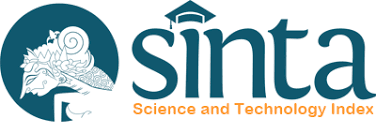The Analysis of Recognition, Measurement, Presentation and Disclosure of Assets arisen from Tax Amnesty Program in Indonesia (Study Case in PT. XYZ)
Abstract
Tax amnesty program in 2016 gives new problem for accountants in Indonesia in dealing those assets in accordance with IFAS. However, very little empirical investigation has explained this problem, and that which has found no empirical support for this. The purpose of this study is to understand how the assets arisen from tax amnesty should be recognized, measured, presented, and dislosed in financial statements. This research also illuminates the readers with phenomenon of tax amnesty in PT XYZ in order to give them understanding in concept and technical. The approach conduted in this study was a qualitative approach where it used case study. This study used primary data and secondary data. Primary data was obtained by interviewing PT XYZ about how they treat their assets from tax amnesty program. Primary data was also obtained by interviewing the auditor in order to get the conceptual understanding from the different perspective. Subsequently, secondary data was obtained from literature review, PSAK 70, seminar, and others. By using qualitative approach, the researcher exposed the data reflected through words or sentences. The result of this study shows that: the entity should use the amount in SKPP (Surat Keterangan Pengampunan Pajak) as deemed cost, and every assets arisen from tax amnesty should be recorded by debiting assets and crediting Additional Paid-in Capital; any initial measurement should be measured at acquistion cost, then measurement after initial measurement should be referred to each relevant SFAS; the entity can choose to apply the accounting policy either retrospectively or prospectively; the entity can present tax amnesty assets in the same classificaton of non-tax amnesty assets only if they have same measurement method; and the entity disclose the adequate information in financial statements.
Keywords
Full Text:
PDFReferences
Alm, J., McKee, M., Beck, W. (1990). Amazing Grace: Tax Amnesties and Compliance. National Tax Journal, 43(1), 23-37.
DSAK IAI (2016). PSAK 70: Akuntansi aset dan liabilitas pengampunan pajak
Dirjen Pajak Kementrian Keuangan. (2016). Retrieved from http://www.pajak.go.id
Finansial.bisnis.com. (2016). Retrieved from http://finansial.bisnis.com/read/20161229/10/615837/amnesti-pajak-jelang-akhir-periode-kedua-pernyataan-harta-rp4.206-triliun.-sehari-naik-rp47-triliun
Fatih, Eren (2011). Tax Amnesty with Effects and Effecting Aspects: Tax Compliance, Tax Audits and Enforcements Around. The Turkish Case
PWC Indonesia (2016). Accounting News Flash PSAK 70: Accounting for Tax Amnesty Assets and Liabilities
Sumarso (2016). Memahami Perlakuan Akuntansi bagi Entitas yang Mengikuti Program Amnesti Pajak.
Wisegeek. (2014). What is Tax Amnesty? Retrieved from http://www. wisegeek.com/what-is-tax-amnesty.htm.
DOI: http://dx.doi.org/10.33021/jaaf.v1i2.266
Refbacks
- There are currently no refbacks.
Mailing Address
Jl. Ki Hajar Dewantara, Kota Jababeka, Cikarang Baru, Bekasi 17550 - Indonesia
Mail Address
jaaf@president.ac.id
ISSN 2580-1791 (Print)
ISSN 2615-8051 (Online)
---------------------------------------------------------------------------------------------------------------------------------------------------
JAAF (Journal of Applied Accounting and Finance) is indexed in:








.png)
.png)




